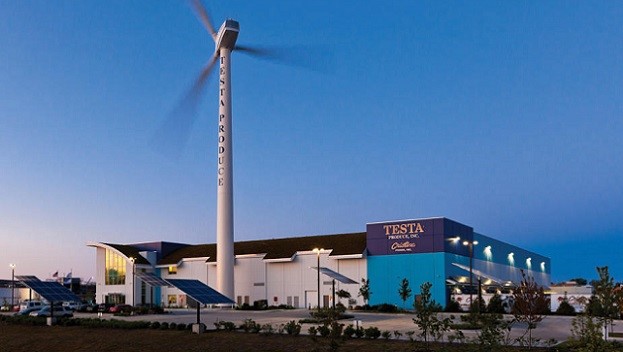
CHICAGO—The use of public-private partnerships for new development has become more popular throughout much of the US. But although the strategy can be very helpful in getting proposed projects underway, those interested will probably need expert advice, RealShare Industrial panelists in Chicago said yesterday.
“The debt side is going to be hard,” Kate Crowley, principal, Baker Tilly, said at an afternoon panel, which was moderated by David Wilson, 2018 CCIM Institute president and executive vice president, Lockard Development, Inc. Completed deals can involve “seven of eight layers” of financing, including various tax credits, TIF funds and a host of incentives. And that complex array of funding can worry some bankers. “They sometimes need a lot of education on how to do it.”
And the process can be difficult for the developers as well. “You're going to see strings attached to this funding,” said Thomas M. Boyle, principal, Transwestern. The governments which agree to funnel scarce dollars into development projects will expect, for example, a certain number of jobs to be created.
Still, “in some respects, it's easier to have a cooperative government working with you,” added Crowley. A partnership like that automatically gives a developer credibility, and opens the door to securing other incentives for its proposal.
And once a developer arranges all those incentives, the real work begins. “It can be like herding cats,” said Crowley. Sometimes, for example, a multimillion dollar project will need a $500,000 Brownfields grant to come through before closing. That can be maddening, but “who doesn't want $500,000 in public subsidies?”
Tony Q. Smith, executive vice president of SB Friedman, said public-private partnerships only function well if they seek to solve problems beyond just completing ordinary buildings. “There needs to be motivation on both sides.” A company may want a distribution center on a certain infill site, but environmental problems make it too costly. The municipality, in turn, may consider the proposal an opportunity to both clean up the site and create high-paying jobs. If those goals are not reached, a partnership could be criticized as corporate welfare.
That dynamic, Smith added, means “there is a tension in every public-private partnership.” Whatever the goals, he advises both parties to be crystal clear about their expectations and understand the needs of their partners.

Smith said Testa Produce Inc. in Chicago shows what public-private partnerships can accomplish. The century-old firm wanted to change its image by creating the greenest, most environmentally sustainable freezer/cooler building possible. And the city of Chicago wanted to clean up the chosen site in its Chicago Stockyards Industrial Corridor, as well as promote it as a new location for green businesses.
The company ended up putting about $5 million worth of green features into a $23 million building, Smith added, including a green roof, rainwater harvesting cistern and solar panels. The site also includes a water retention pond and a 238-foot wind turbine to supply power. The cost would have been prohibitive for the company on its own, but a collection of New Market Tax Credits, renewable energy credits, among other incentives, from both the city and state, made it possible. “All those packaged together, just barely, got the facility built.”
Want to continue reading?
Become a Free ALM Digital Reader.
Once you are an ALM Digital Member, you’ll receive:
- Breaking commercial real estate news and analysis, on-site and via our newsletters and custom alerts
- Educational webcasts, white papers, and ebooks from industry thought leaders
- Critical coverage of the property casualty insurance and financial advisory markets on our other ALM sites, PropertyCasualty360 and ThinkAdvisor
Already have an account? Sign In Now
*May exclude premium content© 2025 ALM Global, LLC, All Rights Reserved. Request academic re-use from www.copyright.com. All other uses, submit a request to [email protected]. For more information visit Asset & Logo Licensing.








